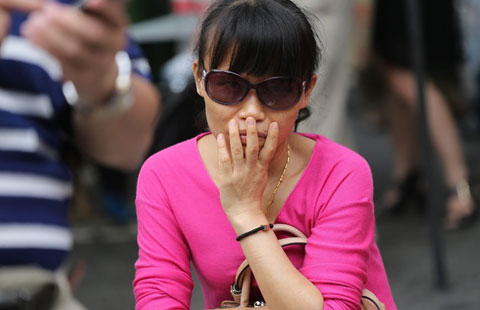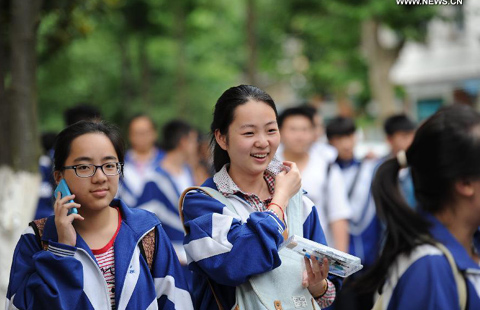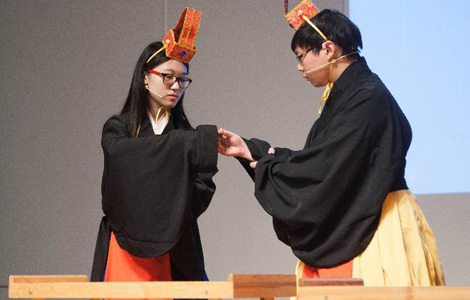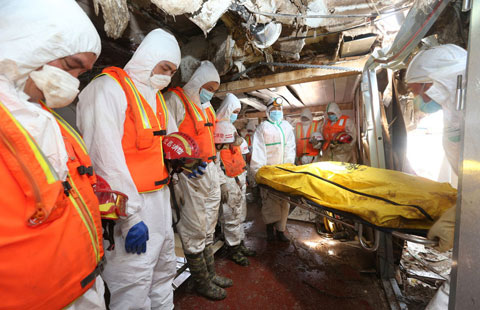Palace Museum presents large-scale porcelain show
Updated: 2015-06-09 07:29
By Wang Kaihao(China Daily)
|
||||||||
Beijing's Palace Museum, also known as the Forbidden City, has an ongoing porcelain exhibition that promises visitors a wide view of imperial China.
While historically, many porcelain pieces have similarities in their facades, styles and patterns, only the most stunning ones were taken to the Ming Dynasty (1368-1644) courts from the renowned porcelain hub of Jingdezhen in eastern China's Jiangxi province.
Imperial Ceramics and Porcelain of the Great Ming: Comparison of Excavated and Extant Ceramic Pieces from Hongwu (1368-98), Yongle (1402-24), and Xuande (1425-35) Reigns, is the show that now presents some 297 sets from collections of both the museum and the Jingdezhen Archaeological Research Institute to offer people a more thorough understanding of the ancient ceramic industry.
"As a place that made porcelain for emperors, the royal kiln in Jingdezhen had very high standards for its products," says Shan Jixiang, director of the Palace Museum. "Once there was the slightest blemish, the porcelain pieces were broken and buried."
However, the defective ones are also important historical references for modern society, according to Geng Baochang, a veteran researcher at the Palace Museum.
For example, an exhibited jar restored from broken pieces of porcelain reveals that it was originally made for Emperor Xuande, who was a fan of cricket fighting, a blood sport similar to cockfighting. But none of his cricket jars in the palace survived.
"The porcelain collection in the Forbidden City has a clear linage, and the different layers of earth also distinctly indicate the ages of these broken pieces, which provides abundant references," Geng says.
He points out that the restoration of the broken pieces also offers new ideas on the subject of ceramics. For example, previously unknown inner structures and complicated manufacturing techniques of a blue-and-white tripod are detected from the pieces, after assembling them.
"For visitors, the impact of a restored broken article is sometimes even stronger than a complete one," he says.
The Ming courts also worked on preventing counterfeits of their royal kiln products and the process remained rigid until the mid-16th century. According to the law then, those who privately copied royal porcelain styles would face the death penalty, which left Jingdezhen the only place outside of Forbidden City to record this crucial phase of Chinese art history.
"Through further research, people will also know how these royal articles influenced global interest in porcelain since the 14th century," Shan says. "Consequently, this exhibition is more than a banquet for general visitors. Rather it is a milestone for academia."
The show started last week and runs through Sept 2.
wangkaihao@chinadaily.com.cn

 Yes, we are waiting for our children
Yes, we are waiting for our children
 Chinese artist to be recognized at International Muse Awards
Chinese artist to be recognized at International Muse Awards
 2015 Apple WWDC kicks off in San Francisco
2015 Apple WWDC kicks off in San Francisco
 Ten photos you don't wanna miss - June 9
Ten photos you don't wanna miss - June 9
 National college entrance exam ends in most parts of China
National college entrance exam ends in most parts of China
 Peking University opens Chinese traditional art courses
Peking University opens Chinese traditional art courses
 Rescuers mourn victims on seventh day since Eastern Star disaster
Rescuers mourn victims on seventh day since Eastern Star disaster
 Rescuers enter Eastern Star hull in search efforts
Rescuers enter Eastern Star hull in search efforts
Most Viewed
Editor's Picks

|

|

|

|

|

|
Today's Top News
Prove hacking: experts
Amid tensions, top Chinese brass visiting US
Apple reveals plan to develop all-platform eco-system empire
Video of officer who drew gun on black teens raises tension
Suu Kyi visit to boost ties with Myanmar
China gives its yuan to Broadway
Questions remain unresolved in the cruise ship disaster
Escaped New York prisoners may have had help from staff
US Weekly

|

|







